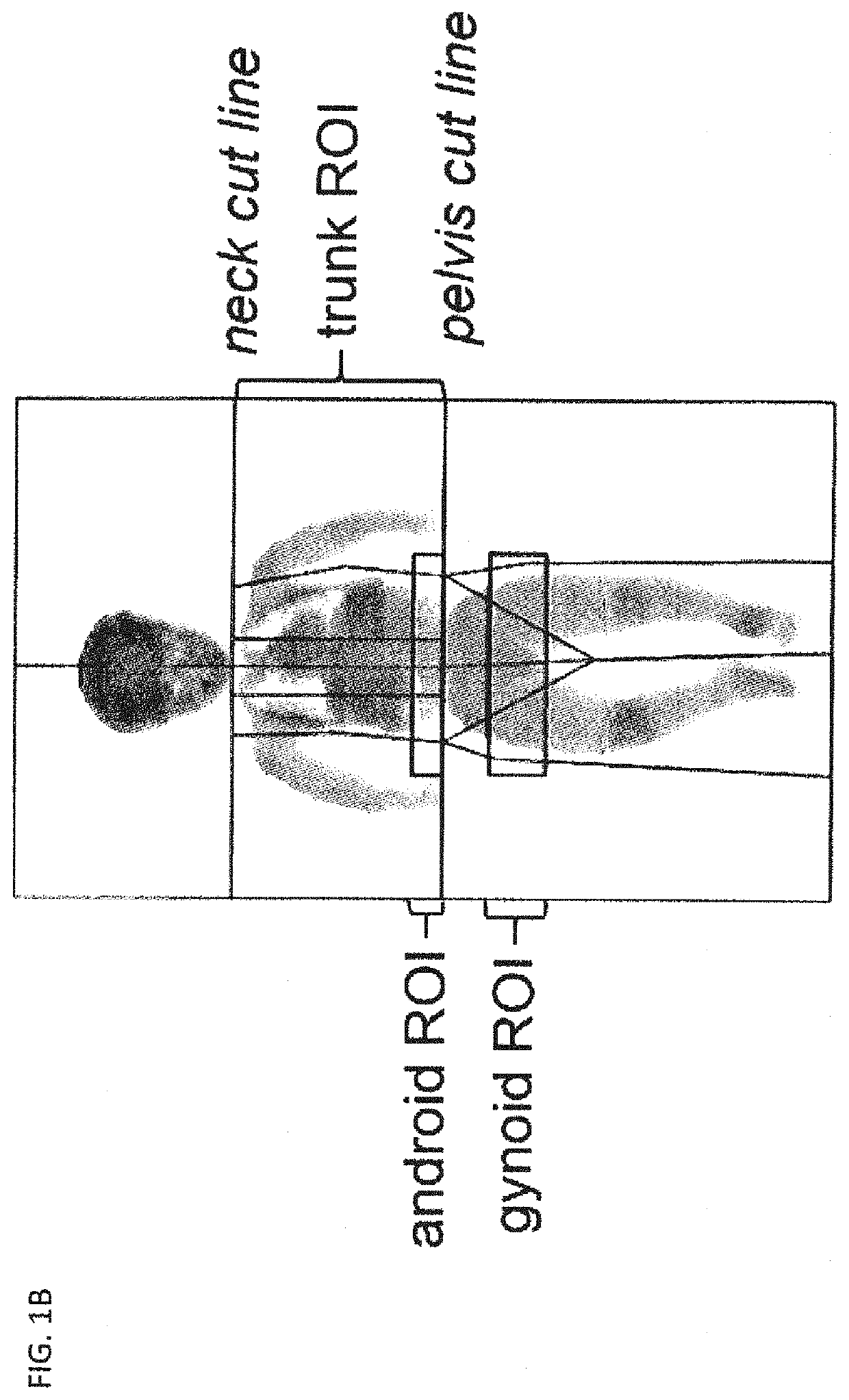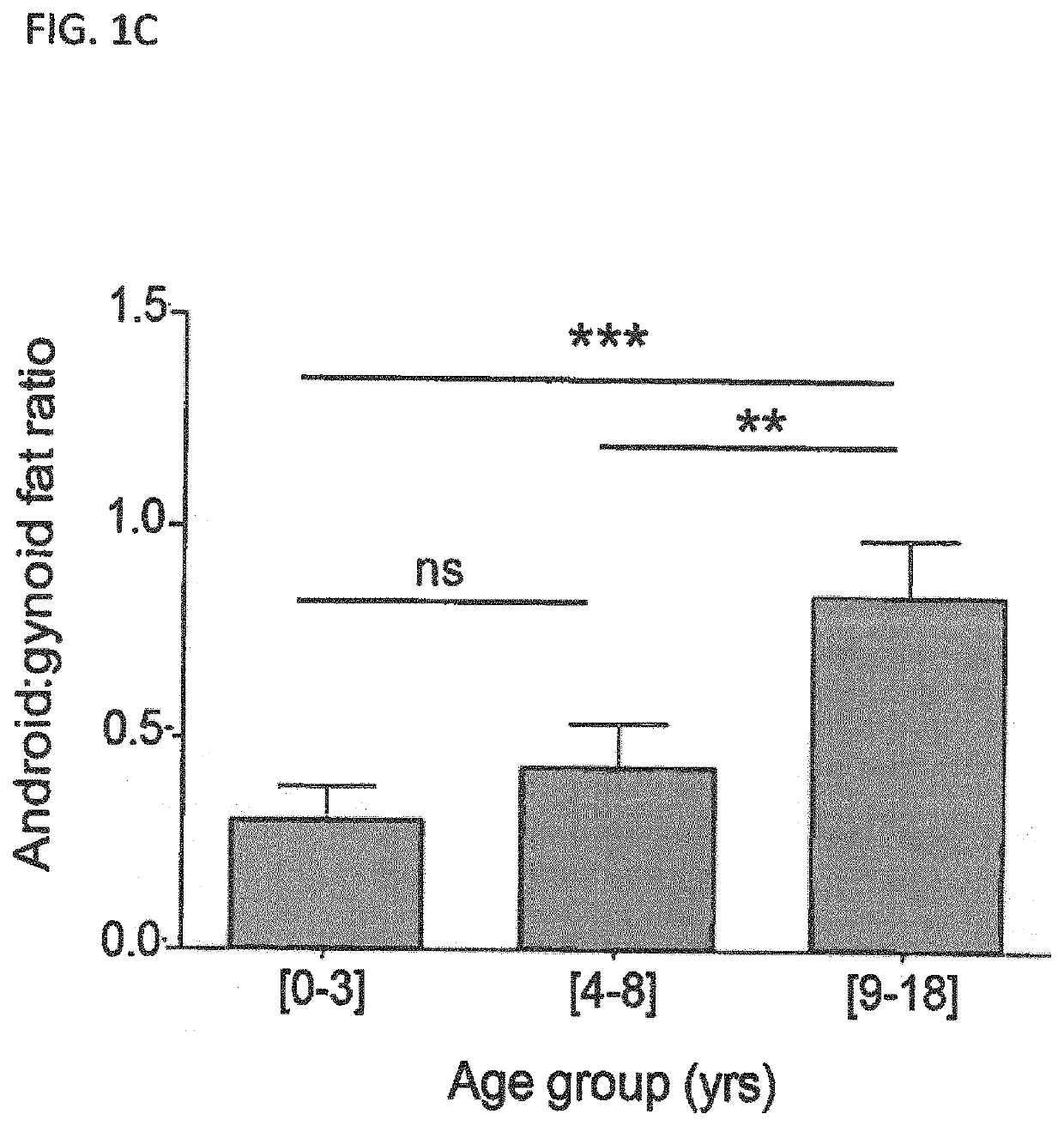Treatment of abnormal visceral fat deposition using soluble fibroblast growth factor receptor 3 (sfgfr3) polypeptides
a technology of soluble fibroblast growth factor and visceral fat, which is applied in the direction of peptide/protein ingredients, drug compositions, metabolic disorders, etc., can solve the problems of obesity achondroplastic patients, increased risk of serious complications, and abnormal short bones
- Summary
- Abstract
- Description
- Claims
- Application Information
AI Technical Summary
Benefits of technology
Problems solved by technology
Method used
Image
Examples
example 1
[0129]Study Design
[0130]To evaluate the potential of sFGFR3 therapy (e.g., sFGFR3 having the sequence of SEQ ID NO: 1) to prevent the development of abdominal obesity in achondroplasia, we have first characterized the development of obesity in children by doing a retrospective chart review and have then conducted a study in Fgfr3ach / + mice, a mouse model recapitulating most human symptoms. For the chart review, eleven subjects (5 girls and 6 boys) with achondroplasia were followed from birth up to 18 years in the Department of endocrinology, bone diseases, genetic and medical gynecology of the Purpan Children's Hospital in Toulouse, France. This retrospective chart review study was conducted in accordance with the declaration of Helsinki and the French regulations on Biomedical research, not requiring ethics committee approval for a non-interventional study. All patients harbored the G380R FGFR3 mutation (G380R refers to the numbering in the full length FGFR3, including the signal p...
example 2
[0148]Achondroplasia Patients Develop an Excess of Abdominal Adipose Tissue without Classical Complications
[0149]Subjects were children and adolescents with achondroplasia. They were included in a longitudinal, retrospective study conducted by the same observer for an average of 8.6±5.6 years. Anthropometric measures and body composition were recorded from birth on during follow up visits and compared between three age groups ranging from [0-3], [4-8] and [9-18] years old. Several metabolic blood parameters were measured and compared in the different age groups. Blood values for visits under age of 3 were not considered because of the difficulty to restrict food intake in infants and thus control metabolic parameters at this young age.
[0150]It is known that achondroplasia patients not only display impaired growth but that they also have a tendency to gain excessive weight leading to overweight or even obesity (Hoover-Fong et al., Am. J. Med. Genet. A. 143A:2227-2235, 2007). As seen ...
specific embodiments
[0168]The following specific embodiments also describe the present invention:
[0169]1. A method of treating or reducing abnormal fat deposition in a subject in need thereof comprising administering a soluble fibroblast growth factor receptor 3 (sFGFR3) polypeptide, a polynucleotide encoding the sFGFR3 polypeptide, or a host cell comprising the polynucleotide to the subject.
[0170]2. The method of 1, wherein the abnormal fat deposition comprises visceral fat deposition.
[0171]3. The method of 2, wherein:
[0172]a) the abnormal visceral fat deposition is associated with or surrounding one or more of the following organs: the heart, liver, spleen, kidneys, pancreas, intestines, reproductive organs, and gall bladder;
[0173]b) the abnormal visceral fat deposition causes disease in one or more of the following organs: the heart, lungs, trachea, liver, pancreas, brain, reproductive organs, arteries, and gall bladder; or
[0174]c) the abnormal visceral fat deposition is caused by dysfunction in an ...
PUM
| Property | Measurement | Unit |
|---|---|---|
| equilibrium dissociation constant | aaaaa | aaaaa |
| equilibrium dissociation constant | aaaaa | aaaaa |
| time | aaaaa | aaaaa |
Abstract
Description
Claims
Application Information
 Login to View More
Login to View More - R&D
- Intellectual Property
- Life Sciences
- Materials
- Tech Scout
- Unparalleled Data Quality
- Higher Quality Content
- 60% Fewer Hallucinations
Browse by: Latest US Patents, China's latest patents, Technical Efficacy Thesaurus, Application Domain, Technology Topic, Popular Technical Reports.
© 2025 PatSnap. All rights reserved.Legal|Privacy policy|Modern Slavery Act Transparency Statement|Sitemap|About US| Contact US: help@patsnap.com



